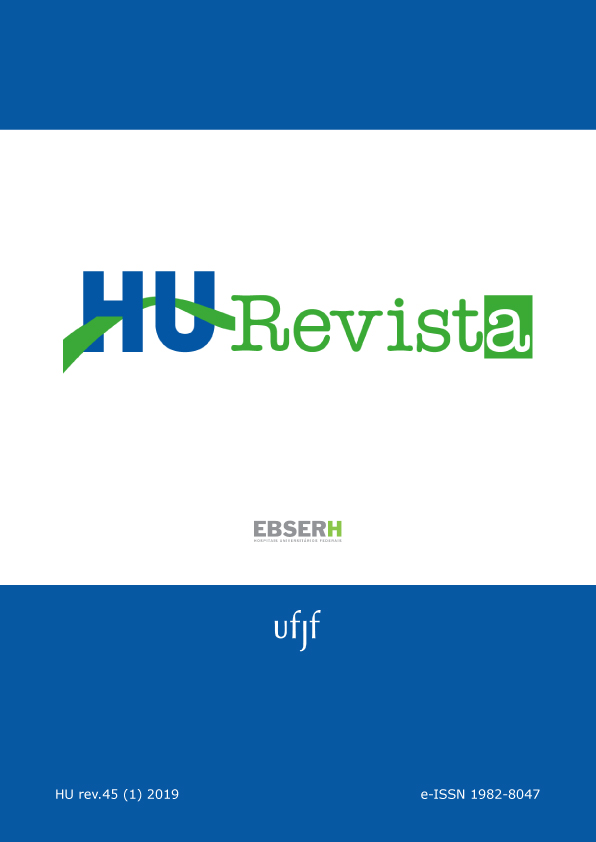Can child medications cause erosion on the surface of deciduous teeth? A systematic review of literature
DOI:
https://doi.org/10.34019/1982-8047.2019.v45.13976Keywords:
Dental erosion, Deciduous tooth, Oral administration.Abstract
Introduction: Dental erosion is characterized by a progressive and irreversible loss of mineralized dental tissues that occurs without bacterial involvement. It is believed that the frequent use of oral liquid medicines in children can develop dental erosion since the majority of these medications has acidic pH, which can act as a predisposing factor for dental erosion development. Objective: The present study evaluated the effects of the use of liquid oral medications on the structure of deciduous teeth by a systematic review of literature. Material and Methods: We conducted a survey of scientific articles in PubMed and Web of Science databases on March 2018, using specific descriptors for the research, in order to evaluate descriptively the following question: "Children's medicines for continuous use may cause erosion on the surface of deciduous teeth?". We found 278 articles in the PubMed database and 41 in the Web of Science database, of which 18 articles were matched, so 301 titles and abstracts were read and analyzed. Of these, 293 were excluded. Thus, 8 articles were selected for the critical analysis. Results: Liquid medications of continuous use, generally used for the treatment of chronic conditions in children, promoted erosive effect on dental structure, especially when related to pH and titratable acidity of the drugs in in vitro studies. Conclusion: It is necessary to carry out clinical studies for a more adequate evaluation of the erosive effect of children's medicines on the surface of deciduous teeth.
Downloads
References
Costa CC, Almeida ICS, Filho LC. Erosive effect of an antihistamine-containing syrup on primary enamel and its reduction by fluoride dentifrice. Int J Clin Pediatr Dent 2006; 16(3):174-180.
Mali GV, Dodamani AS, Karibasappa GN, Kumar PV, Jain VM. Effect of conventional and sugar free pediatric syrup formulations on primary tooth enamel hardness: an in vitro study. J Indian Soc Pedod Prev Dent 2015; 33(4):331-336.
Scatena C, Galafassi D, Gomes-Silva JM, Borsatto MC, Serra MC. In vitro erosive effect of pediatric medicines on deciduous tooth enamel. Braz Dent J 2014; 25(1):22-27.
Ranjikar S, Kaidonis JA, Smales RJ. Gastroesophageal reflux disease and tooth erosion. Int J Dent 2012; 2012:1-10.
Johansson AK, Omar R, Carlsson GE, Johansson A. Dental erosion and its growing importance in clinical practice: from past to present. Int J Dent 2012; 2012:1-17.
Corrêa FNP, Murakami C, Carvalho TS, Corrêa MSNP. Diagnóstico, prevenção e tratamento clínico da erosão dentária. Rev Assoc Paul Cir Dent 2010; 65(1):12-19.
Sousa RIM, Oliveira MC, Clementino MA, Cavalcanti AL, Vieira FF. Potencial erosivo e cariogênico de anti-histamínicos de uso infantil. RFO UPF 2010; 15(3):257-262.
Tupalli AR, Satish B, Shetty BR, Battu S, Kumar JP, Nagaraju B. Evaluation of the erosive potential of various pediatric liquid medicaments: an in vitro study. J Indian Soc Pedod Prev Dent 2014; 6(1):59-65.
Babu GKL, Rai K, Hedge AM. pH of medicated syrups–does it really matter? – an in-vitro study: part-II. Int J Clin Pediatr Dent 2008; 33(2):51-56.a
Babu GKL, Rai K, Hedge AM. Pediatric liquid medicaments – do they erode the teeth surface? An in vitro study: part I. Int J Clin Pediatr Dent 2008; 32(3): 189–194.b
Kulkarni P, Anand A, Bansal A, Jain A, Twari U, Agrawal S. Erosive effects of pediatric liquid medicinal syrups on primary enamel: an in vitro comparative study. Indian J Dent 2016; 7(3):131-133.
Moher D, Liberati A, Tetzlaff J, Altman DG. Preferred reporting items for systematic reviews and meta-analyses: the PRISMA statement. Int J Surg 2010; 8(5):336–341.
Pasdar N, Alaghehmand H, Mottaghi F, Tavassoli M. Experimental study of iron and multivitamin drops on enamel microhardness of primary tooth. J Int Soc Prev Community Dent 2015; 5(6):518-524.
Attin T, Wegehaupt FJ. Methods for assessment of dental erosion. Monogr Oral Sci 2014; 25:123-142.
Downloads
Published
How to Cite
Issue
Section
License
Cessão de Primeira Publicação à HU Revista
Os autores mantém todos os direitos autorais sobre a publicação, sem restrições, e concedem à HU Revista o direito de primeira publicação, com o trabalho licenciado sob a Licença Creative Commons Attribution que permite o compartilhamento irrestrito do trabalho, com reconhecimento da autoria e crédito pela citação de publicação inicial nesta revista, referenciando inclusive seu DOI.









